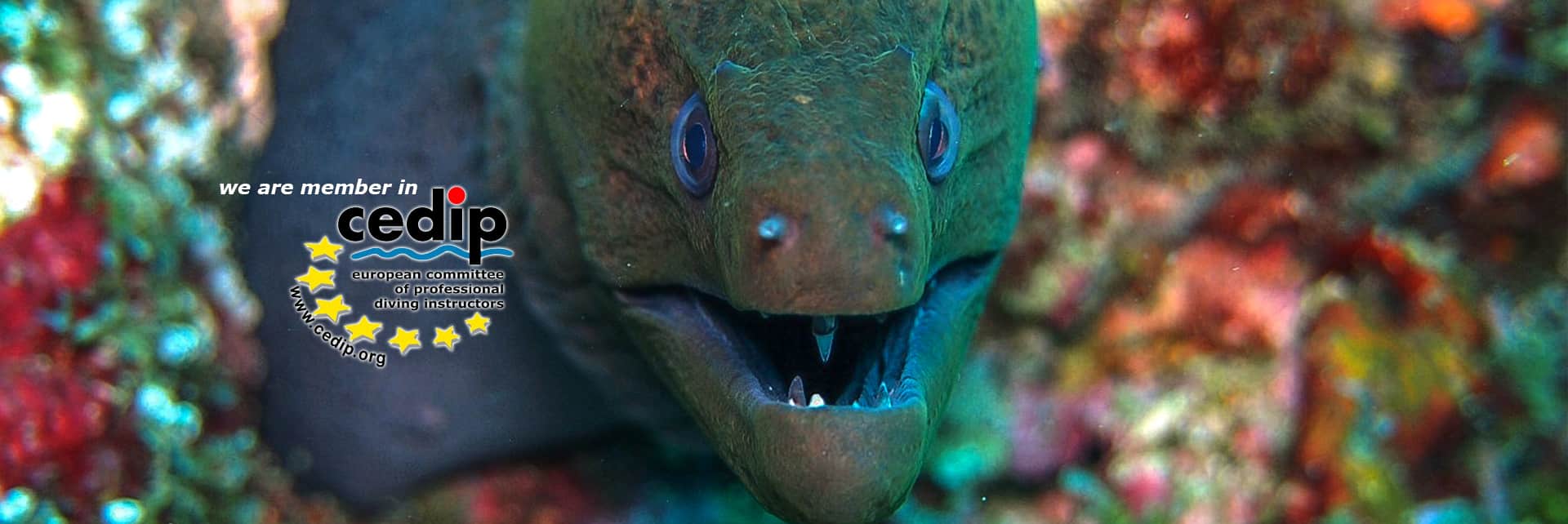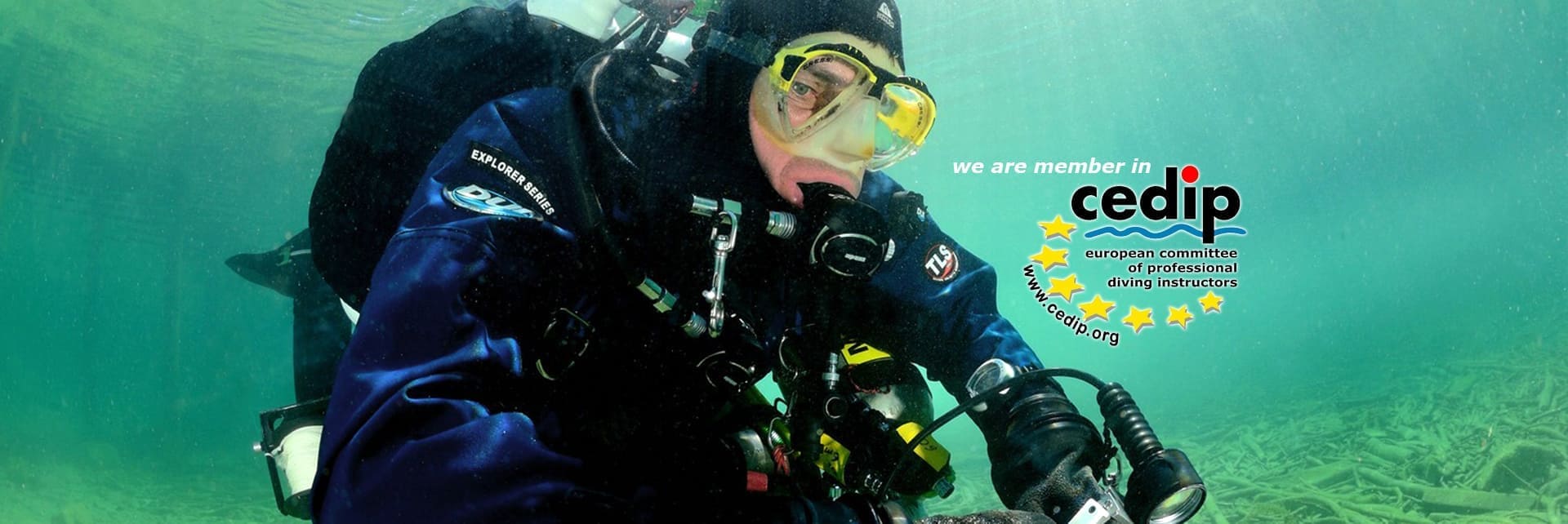Traffic accident at the long lake
EOBV supports emergency services with training
The EOBV in the rescue system
Fire brigade, water rescue, police and military are already diving with us, and when are you coming? The EOBV, the only state-authorized diving association in Austria, once asked this question in a publication. EOBV diving instructors not only carry out well-founded training in the scuba diving sector, but are also anchored in all areas of diving, where they actively participate or provide advice. The good, long-standing cooperation with the aid organizations has not only created joy but also friends and the joint activities with the fire brigade and water rescue teams have proven to be a positive exchange of ideas for all sides.



Traffic accident at the long lake
Under this heading, our EOBV diving instructor and press spokesman Stefan Arnesch and the EOBV divers Dietmar Stieger and Roland Winter accompanied a large-scale further training, which extended over several evenings, both theoretically and practically. The focus was on vehicle recovery and diving safety. Great importance was attached to not shooting the vehicle blindly upwards, but to carrying out a controlled recovery in which the rescue divers can also experience the dynamics of such vehicles to be recovered up close. And this scenario was faced on August 26th by the emergency services of the FF Thalsdorf, St. Veit and Launsdorf as well as the water rescue team in Längsee and St. Andrä im Lavantal in the course of an exercise. Arrived on site, the extent was quickly explored and it was found that a car had sunk in the lake and that the driver was still in the vehicle. The rescue divers from the Thalsdorf , Launsdorf and St. Veit fire department quickly began to investigate the situation under water, a controlled crash rescue of the casualty from the sunken vehicle wreck from a depth of approx. 6m and his first aid by the comrades on land. Since such accidents are rather rare, various theoretical and practical approaches on how to deal with such scenarios were regularly taught in the course of the exercise. Diving Operations Manager LM Michael Rabitsch : “It is important to convey that when a person takes a breath underwater, whether from a scuba tank or an air bladder in the vehicle, they are breathing air under positive pressure. From a first aid perspective, such accidents are considered a diving accident and the administration of pure oxygen can be essential for survival.”
As if this horror scenario wasn’t enough, in the course of the preparations for vehicle recovery, a rescue diver simulated a serious diving accident. During the work, he rose to the surface and called for help before he lost consciousness. Commander of the FF Thalsdorf and head of operations OBI Michael Regenfelder immediately initiated all rescue measures and the diver was rescued from the water by rescue divers and handed over to the comrades for medical care on the shore.
The sunken car was subsequently secured and recovered using lifting bags. “Under real conditions, recovering vehicles is one of the most dangerous and most underestimated tasks of rescue divers. Due to a number of factors, vehicles under water quickly acquire a certain momentum of their own and the vehicle can roll over uncontrollably and sink back into the depths despite the buoyancy aid. A dangerous undertaking which, despite the best security measures, always harbors a certain risk.” So Stefan Arnesch, professional diving instructor of the EOBV , who accompanied the exercise theoretically and practically.
“For the general public, the field of activity of rescue divers is rather opaque and so these specialists in the rescue system often take a back seat. It is important to educate and carry out meaningful exercises in which civilians, but also comrades, can find out about the activities and the training.” Rabitsch said.
In terms of this exercise, theoretical and practical further training with full masks and communication units, recovery equipment, etc. were carried out over several evenings in order to be at a uniform level of training in an emergency. Under the supervision of ÖWR Längsee head of operations Stefan Petrasko and his deputy Markus Bräuhaupt , various exercises were also carried out in which, in addition to diving activities, the lifeguards of the ÖWR also trained in rescuing people from a sunken vehicle.



Locked in the vehicle, what to do? Our EOBV diving instructor Stefan Arnesch gives tips and advice for emergencies.
Most importantly – get out of the vehicle!! And as quickly as possible. A car usually floats on the surface for 2-3 minutes. This is the window in which you have to seize opportunities. If the windows and doors don’t open, try breaking the windows. The trunk is most likely to be opened, since cars always begin to sink due to the engine. Electric windows are quickly out of order and once the vehicle sinks below the waterline, the further sinking process goes very quickly. Vehicles can only come to rest on the ground within a radius of up to 50m, as they can glide through the water like an airplane. Waiting until the pressure has equalized, taking a breath and surfacing is rather difficult to implement in practice.
Car tires are filled with air and generate lift and torque, which usually causes vehicles to hit the side or the roof. Accordingly, doors can often no longer be opened and you have to look where you can find an air bubble. Should you make it out of the vehicle, it is important to regularly deflate your lungs when surfacing to avoid dangerous over-inflation and barotrauma.
For the emergency services in general, it is important to follow the instructions of the divers. They are in a dangerous area and uncontrolled actions can have dire consequences for their health. In practice, it is recommended before recovering the vehicle, especially from depths of more than 10m, to let the air out of the car tires and not to let the vehicle rise directly to the surface in one go. There is a risk that the vehicle will come back down due to its own dynamics.



Pictures: ÖWR 1/19 Längsee, EOBV, FF-Thalsdorf
More photos/report on my district: https://www.meinbezirk.at/st-veit/c-lokales/verkehrsunfall-am-laengsee_a4209090










